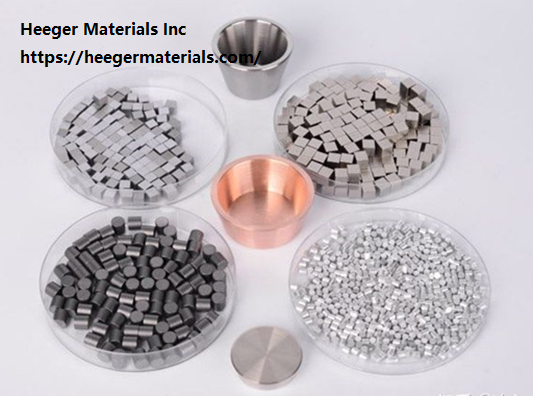Electron-beam evaporation coating is a physical vapor deposition (PVD) process used to deposit thin films on a substrate. It is a vacuum-based coating process in which a material is heated to a high temperature by an electron beam and evaporated onto a substrate. The electrons used to heat the material are generated by an electron gun, which is a vacuum device containing an electron source and an electromagnetic focusing system. The electron beam is focused onto the material to be evaporated, which is typically in the form of a small pellet or wire. The evaporated material is then deposited onto the substrate, which is often a thin film or a thin metal substrate. The resulting thin film is usually of uniform thickness and can be used for a variety of applications such as optical coatings, protective coatings, and electrical insulation.
- Electron-beam evaporation workflow
Electron-beam evaporation is based on the evaporation of the tungsten wire. A current of about 5 to 10 kV passes through the tungsten wire (located outside the deposition area to avoid contamination) and heat to the point where electron thermal ion emission occurs. Use a permanent magnet or electromagnet to focus and direct the electrons to the evaporator materials (placed in a crucible). As the electron beam hits the surface of the evaporative pill, its kinetic energy is converted into heat, releasing high energy (more than millions of watts per square inch). Therefore, the furnace containing the evaporative material must be water-cooled to avoid melting.

- Advantages and disadvantages of electron-beam evaporation
Electron beam evaporation can evaporate high melting point materials, which is more efficient than general resistance heating. Electron beam evaporation can be widely used in optical coatings such as high-purity thin films and conductive glass. It also has potential industrial applications for wear-resistant and thermal barrier coatings, cutting, and tool industry hard coatings in the aerospace industry. However, electron beam evaporation cannot be used to coat the inner surface of a complex geometry. Furthermore, filament degradation in the electron gun may lead to an uneven evaporation rate.
- Electron-beam evaporation applications
Electron-beam evaporation is widely used in various applications due to its high deposition rate and high material utilization efficiency. For example, the high-performance aerospace and automotive industries require high temperature and wear resistance for materials; durable tool hard coatings; and chemical barriers and coatings to protect surfaces in corrosive environments. Electron-beam evaporation is also used in optical thin films, including laser optics, solar panels, glass, and building glass, to give them the electrical conductivity, reflection, and transmission properties they need.
- Electron-beam evaporation VS thermal evaporation
The biggest difference between electron beam evaporation and thermal evaporation is that electron beam evaporation is an electron bombardment object, generating high energy for evaporation, and thermal evaporation completes the process through heating. Electron-beam evaporation provides high energy compared to thermal evaporation, but controlling the thickness of the film at a magnitude of 5nm will be difficult. In this case, a good thermal evaporator with a thickness monitor would be more appropriate.
- Electron-beam evaporation has many advantages over thermal evaporation
- Electron-beam evaporation can heat the material to a higher temperature than thermal evaporation, which allows for very high deposition rates and evaporation of high-temperature materials and refractory metals (e. g., tungsten, tantalum, or graphite).
- Electron-beam evaporation can deposit a thinner and more pure film. Water cooling of the crucible restricts the electron beam heating strictly to areas occupied only by the source material, thus eliminating any unnecessary contamination of the adjacent components.
- Electron-beam evaporation sources come in various sizes and configurations, including single or multiple cavities.